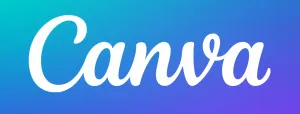Stream Layouts
An organized layout structures information effectively, allowing viewers to easily find the elements they need, such as timers, chat windows, and your work area.
Canva 🔗

Canva is a free graphic design platform that is fairly intuitive to use and quick to pick up on! You can use this site to build any layout or to get inspired with templates. You can upload this into your software as a image or gif.
Figma 🔗

Figma is a collaborative web application for interface design, with additional offline features enabled by desktop applications for macOS and Windows.
Royalty free images & icons
Pexels 🔗

Pexels provides high quality and completely free stock photos licensed under the Pexels license. All photos are nicely tagged, searchable and also easy to discover through our discover pages.
The Noun Project 🔗
The Noun Project is a website that aggregates and catalogs symbols that are created and uploaded by graphic designers around the world.
Fonts
DaFont 🔗
DaFont is a popular online platform where you can download fonts for various purposes. Whether you’re working on a design project, creating digital art, or just want to add a unique touch to your documents.
Google Fonts 🔗
Google Fonts is a service provided by Google that offers a wide selection of high-quality web fonts for use in web projects.
Principles of Grouping
The principles of grouping explain how our brains see patterns. We naturally group things that are close together, look similar, or are connected. This helps us make sense of the visual world around us.
There are five main principles of grouping:
-
Proximity: Objects close together are perceived as being related. Imagine scattered stars. We tend to see groups or constellations based on closeness, even if the stars aren’t truly connected.
-
Similarity: Objects that look similar are seen as belonging together. A row of red balls amongst yellow ones will likely be perceived as a separate group.
-
Continuity: Elements arranged along a line or curve are perceived as following a path and being related. Think of stepping stones leading across a stream.
-
Closure: We tend to fill in gaps to create a complete whole. A broken circle can still be recognized as a circle despite the missing portion.
-
Connectedness: Elements linked by lines or shapes are seen as a unit. Imagine overlapping squares – our brains will likely group them based on the connection.
These principles are used extensively in various fields like design, art, and advertising. By understanding how we group things visually, designers can create layouts that are clear, organized, and engaging.
Videos
Some cool YouTube videos on this topic if you want some inspiration!